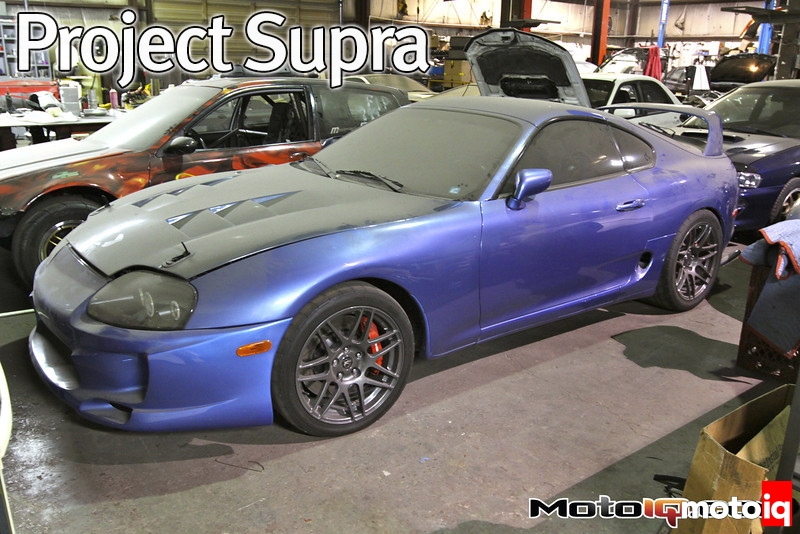 |
| The car's been sitting at Modified by KC since May of 2012, when the engine mishap happened. It's really dirty. |
Project Supra, Part 3
Extreme Engine Tech—The Cylinder Head
By Pablo Mazlumian
It's been a couple of months since our last update, but with many of our awaited products now in hand, things should start to move more swiftly. To bring you up to speed, in Part 1, we ended up with a stronger and lighter shortblock. In Part2 we took care of the crank damper and had our oil pump modified for improved flow. Follow the links to catch up on the build:
Extreme Engine Tech: 2JZ-GTE, Part 1 – More strength, less weight
Extreme Engine Tech: 2JZ-GTE, Part 2 – Good vibrations and better lubrication
Waiting for our long anticipated intake and exhaust manifolds, we were stuck. Jeff Gerner—our engine builder—of FRP Engineering, needed our intake manifold before returning the head to Noland's Cylinder heads for final assembly. When the intake manifold arrived from Hypertune, I think everyone's jaw dropped at not only the beauty of it, but also the build quality. More on that in Part 4, but I've given you a sneak peek of it, and a couple of other very exciting products, in the last page.
Because we ordered Hypertune's intake manifold with larger runners for maximum flow, the first order of business for Jeff was to port-match the intake ports of the cylinder head to the intake manifold. This process is imperative because, if you think about it, when air flowing one direction encounters a smaller opening with sharp edges, the results to flow are detrimental.
I experienced something similar with a turbo M3 I built over a decade ago. The then engine builder over ported the exhaust ports of the cylinder head, making the openings too large for my turbo manifold. At first, I didn't notice, but when that issue was fixed by going back to a stock cylinder head, the results were staggering. The flow—and, therefore, the spool-up—was so greatly improved I had wheel spin at a boost level I could never spin the wheels with before, and nothing else had changed.
 |
| The big port Hypertune intake manifold is anodized in red with CNC machined ports (the base one is all silver). Sorry, I couldn't help it—this article is about the cylinder head. More on the manifold in Part 4. |
 |
| The first order of business was to match the manifold's ports with the cylinder head. While it's hard to see from this angle, it turned out that the Hypertune manifold's ports match up to a stock Supra intake manifold gasket. This meant that no modifications were needed on the manifold's flanges themselves. |
 |
| The cylinder head's intake ports, on the other end, are much smaller. See what I mean about air hitting those edges as it enters the intake ports? It would turn the air toward the center, leaving a large percentage of unused space near the edges and causing unwanted air turbulence. It was time to grind away. |
 |
| After applying a dye, and tracing the inside edges of the gasket, Jeff has something to go by with his grinder. |




1 comment
you have the wrong pictures in this article